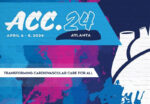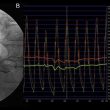Original title: Colchicine Treatment for the Prevention of Bare-Metal Stent Restenosis in Diabetic Patients. Reference: Spyridon Deftereos et al. J Am Coll Cardiol 2013;61:1679–85. In stent restenosis is more frequent in diabetic patients, who therefore find DES particularly beneficial. However, there is a subset of these patients with contraindication to prolonged double antiaggregation, due to a programmed surgery<a href="https://solaci.org/en/2013/04/23/colchicine-could-reduce-restenosis-in-diabetic-patients-treated-with-bms/" title="Read more" >...</a>
A new paradigm in the treatment of in-stent restenosis?
Original title: ISAR DESIRE 3: Drug-eluting balloon is best option for restenosis of limus-eluting stents Reference: Dr Robert Byrne. TCT 2012. Miami, Fl. The first of the ISAR DESIRE trials showed that drug-eluting stents (DES) were the best strategy for treating restenosis of a bare metal stent, the second ISAR DESIRE trial tested the hypothesis of changing or<a href="https://solaci.org/en/2012/11/11/a-new-paradigm-in-the-treatment-of-in-stent-restenosis/" title="Read more" >...</a>
ACC 2024 | PREVENT Study
The use of intravascular imaging to identify vulnerable plaque (VP) has proven to be very useful, as such plaque is associated with an increase in major adverse cardiac events. Optimal medical treatment is currently considered the standard strategy to stabilize VP. However, the safety and effectiveness of preventive treatment with percutaneous coronary intervention (PCI) in<a href="https://solaci.org/en/2024/04/11/acc-2024-prevent-study/" title="Read more" >...</a>
ROTA.shock Outcomes: Intravascular Lithotripsy vs. Rotational Atherectomy
At present, severe calcified coronary stenosis poses a significant challenge for PCI. A successful intervention will require plaque modification prior stenting, seeing as sub-expansion has been associated with worse clinical outcomes at followup. The tools normally used to treat these complex lesions include specialized balloons such as cutting, scoring, and high pressure balloons, as well<a href="https://solaci.org/en/2023/09/08/rota-shock-outcomes-intravascular-lithotripsy-vs-rotational-atherectomy/" title="Read more" >...</a>
SOLACI-CACI 2021 | EuroPCR Session
✔️ Watch the complete PCR in the SOLACI-CACI 2021 Congress. 👨‍🏫 Program: 👉 How to manage Coronary Artery Disease in patients with Severe Aortic Stenosis eligible for TAVI? 04:51 – How does Coronary Artery Disease impact decision-making process of the Heart Team for patients with symptomatic severe AS? – Round Table Discussion 10:59 – ACTIVATION<a href="https://solaci.org/en/2021/09/14/solaci-caci-2021-europcr-session/" title="Read more" >...</a>
Outcomes of Contemporary DES in Patients with Diabetes: Do They Render Freedom Obsolete?
Despite our high hopes for new-generation drug-eluting stents (DES), patients with diabetes still have a different prognosis, both clinical and angiographic, compared with non-diabetic patients. Authors sought to investigate the impact of diabetes on patients who underwent drug-eluting stent implantation in the BIONICS (BioNIR Ridaforolimus Eluting Coronary Stent System in Coronary Stenosis) trial. This<a href="https://solaci.org/en/2019/01/28/outcomes-of-contemporary-des-in-patients-with-diabetes-do-they-render-freedom-obsolete/" title="Read more" >...</a>
FFR vs Angiography Guided CABG
In the daily practice and in randomized studies such as Syntax or Freedom, most cardiovascular surgeons across the world use angiography guided CABG to teat 50% coronary stenosis. Many of these lesions might not be functionally significant. There is abundant evidence in favor of fractional flow reserve (FFR) guided PCI, but FFR guided CABG is<a href="https://solaci.org/en/2018/06/27/ffr-vs-angiography-guided-cabg/" title="Read more" >...</a>
Are Abdominal Aortic Aneurysm Screening Programs Overstated?
With the remarkable drop in tobacco use across the world, also dropped mortality associated to abdominal aorta aneurysm rupture (AAA). All AAA screening programs have been designed decades ago, when the risk was higher. This is why we might need to rethink these programs, or at least design new randomized controlled studies to pave the<a href="https://solaci.org/en/2018/06/22/are-abdominal-aortic-aneurysm-screening-programs-overstated/" title="Read more" >...</a>
Urgent/Emergent TAVR: A Valid Option
Courtesy of Dr. Carlos Fava. Aortic stenosis with cardiac failure or cardiogenic shock involves high mortality risk at short term. Surgery in these conditions is often unsafe, which leaves us with valvuloplasty, but only as a bridge to some other procedure, seeing as it is effective only for a short time. Few studies have looked into patients undergoing<a href="https://solaci.org/en/2018/06/20/urgent-emergent-tavr-a-valid-option/" title="Read more" >...</a>
Is normal FFR always good prognosis?
Original Title: Coronary Flow Reserve and Microcirculatory Resistance in Patients with Intermediate Coronary Stenosis. Reference: Joo Myung Lee, el al. J Am Coll Cardiol 2016; 67:1158-69 Courtesy of Dr. Carlos Fava. Measuring fractional flow reserve (FFR) helps establish whether intermediate stenosis will generate ischemia, but it won’t help assess microcirculatory function. It has been shown that<a href="https://solaci.org/en/2016/03/16/is-normal-ffr-always-good-prognosis/" title="Read more" >...</a>








